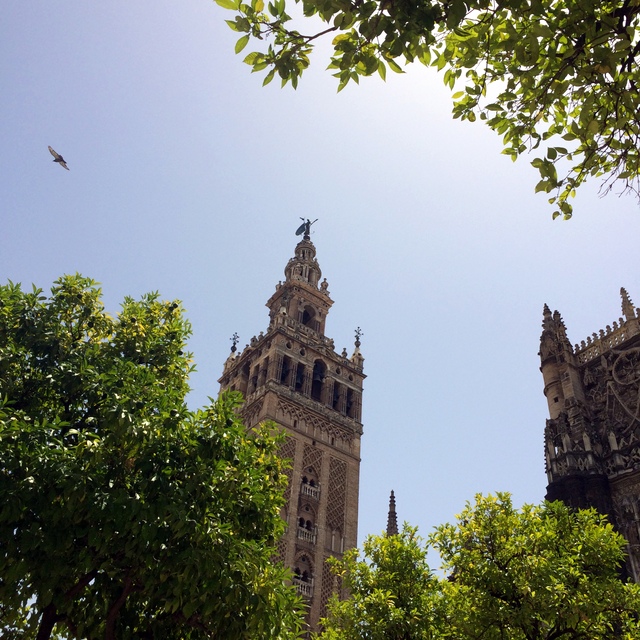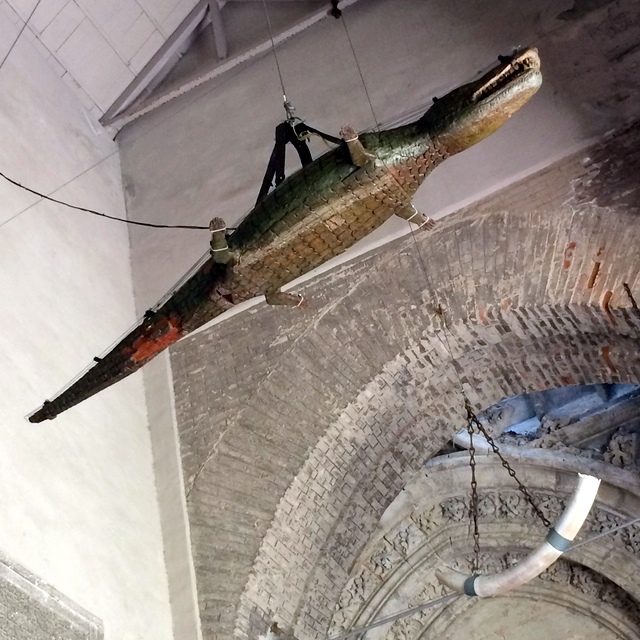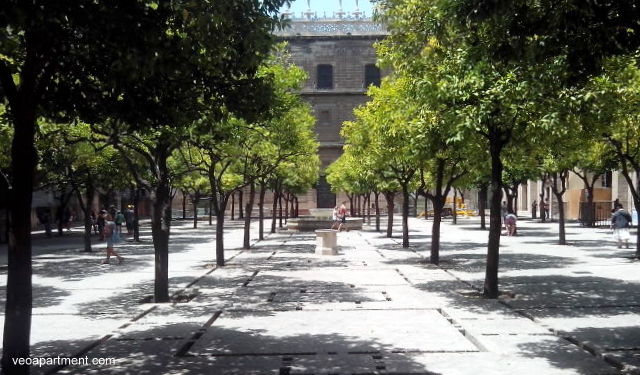
Patio de los Naranjos (Courtyard of the Orange Trees)
Because it’s that time of year (you know what I mean) and because it’s probably Seville’s best known monument (although in the absence of definitive statistics the Alcázar could make the same claim), it’s time to talk about the Cathedral (the Cathedral of Saint Mary of the See, to give it its proper title).
Facts and statistics can be tedious, but at least a few are necessary for the full appreciation of a visit here. First, of course, is that this is, quite simply, the largest Gothic cathedral in the world, and indeed the largest cathedral, though not the largest church – although there is some argument Saint Peters Basilica in Rome and the Basilica of the National Shrine of our Lady of Aparecida in Brazil are generally accepted as larger. This is quite surprising in itself, as although Seville was an important city in the 15th century, its pre-eminence came a little later, after the discovery of the Americas made it the richest city in Europe.
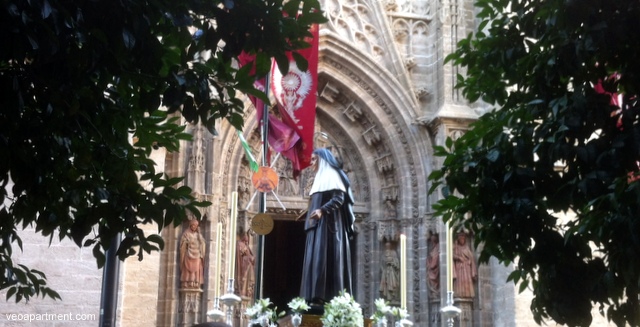
Corpus Christi outside the Door of Baptism
The Cathedral was built on the site of the Aljama Mosque (the New Grand Mosque that replaced the Old Grand Mosque on the site of what is now the El Salvador church), constructed on a greenfield site just outside the old city between 1184 and 1198. Despite its fame it only served as a mosque for fifty years. In 1248 the Christians under Ferdinand III conquered the city, and the Mosque was reconsecrated as a Cathedral. In 1356, however, the structure was badly damaged in an earthquake, and in 1401 the Cathedral Chapter took the decision to demolish it and build a brand new Cathedral.
One member is reputed to have said “Let us build a Cathedral so grand that when men see it they will think we were mad”. All things considered they didn’t do a bad job. The main structure was completed in 1506, but in 1511 the dome collapsed, and took another 8 years to rebuild. The main altar (retablo) was finished in 1526, and the building was considered complete in 1528, although the Royal Chapel (completed 1575), and the belfry and statue at the top of the Giralda Tower (completed 1568) came later. Also later is the Church of El Sagrario, built in the 17th century.
Of the original mosque, the minaret, now the Giralda tower, and the Patio de los Naranjos (orange trees) and its outer wall, including the Gate of Forgiveness (Puerta del Perdón), were retained, and the Giralda has become the city’s most emblematic symbol.
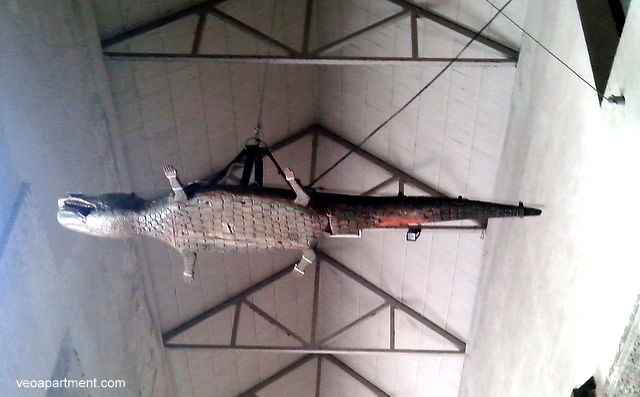
The Crocodile in the Cathedral
For the individual visitor entrance is through the Pavilion from the courtyard in front of the Gate of the Prince in the south facade. The statue here is a life size replica of the one on top of the tower (which is a working weather vane) and represents Faith. There’s often quite a queue for tickets, but you can get a combined ticket at the less busy El Salvador church. Inside, the nave rises to a breathtaking 42 metres in height, and includes the choir loft, and the world’s largest gold altarpiece at the end in front of the Royal Chapel. Some 80 other chapels line the outer walls, and among the famous people buried here are Christopher Columbus and his brother Hernando, Ferdinand III and his wife Beatrice, Alfonso X (see if you can find the crocodile that was given him by the king of Egypt), and Pedro I (who built the Neomudejar palace in the Alcazar).
For most people (which is to say, in my opinion), though, the highlight of the visit is going to the top of the Giralda tower (at 105 metres easily the tallest building in the historic centre) and enjoying the views across the city. No lift, of course, but it’s a ramp, not stairs, so it’s not too arduous. They say that when it was a minaret the muezzin would ride his donkey up to the top to call the faithful to prayer, but this story may well be apocryphal.
For an unusual view of the tower and cathedral, check out what is probably the best holiday apartment in Seville.
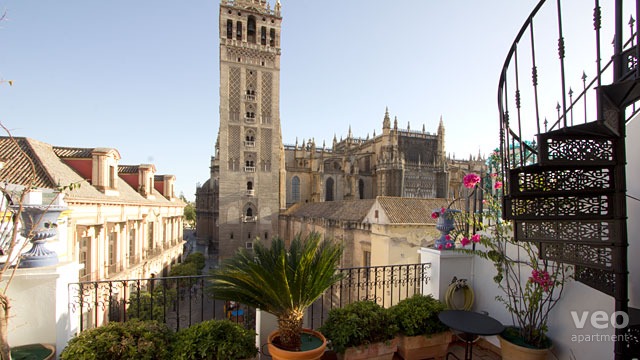
View of the Giralda from Giralda Terrace apartment


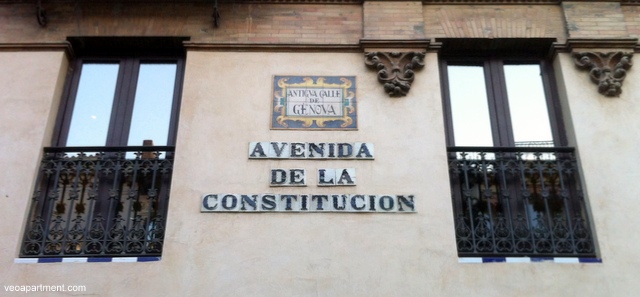
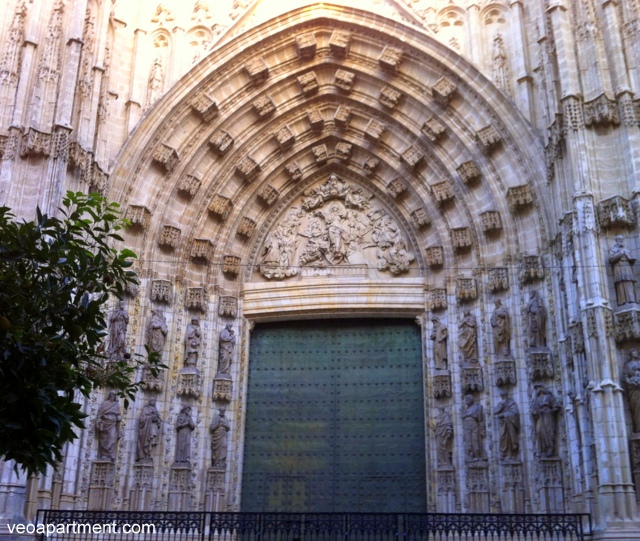
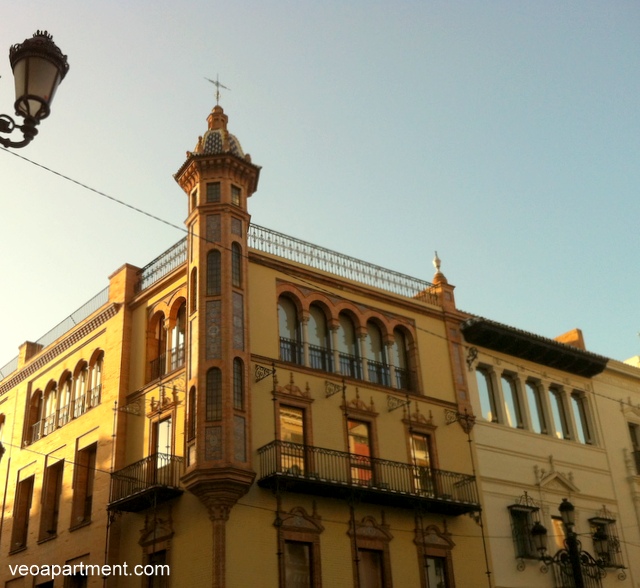
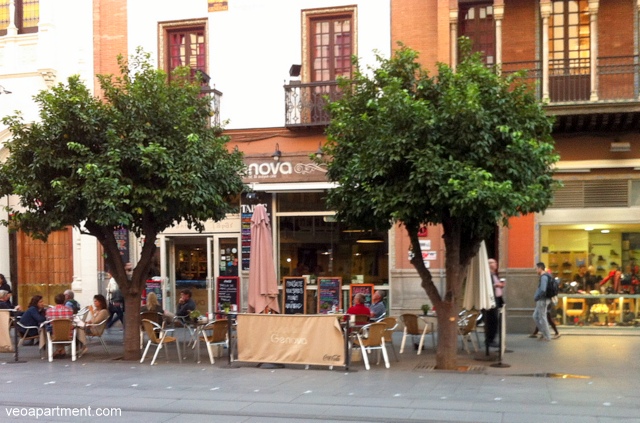
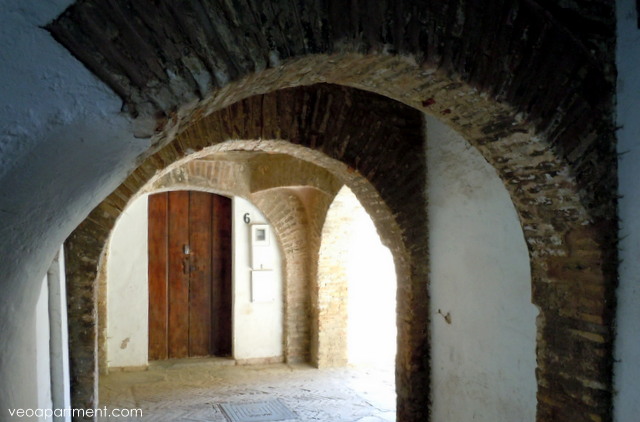 archway in Barrio Santa Cruz
archway in Barrio Santa Cruz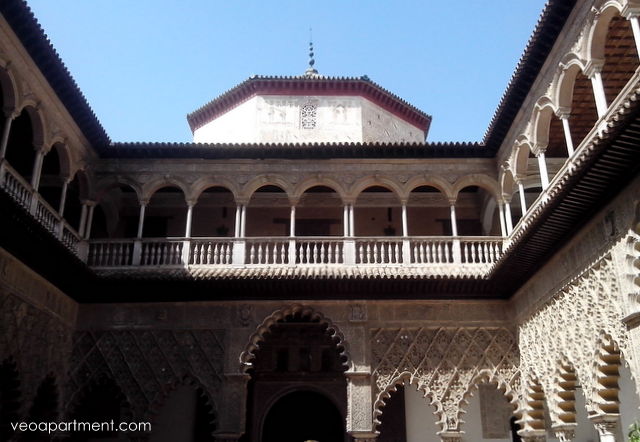
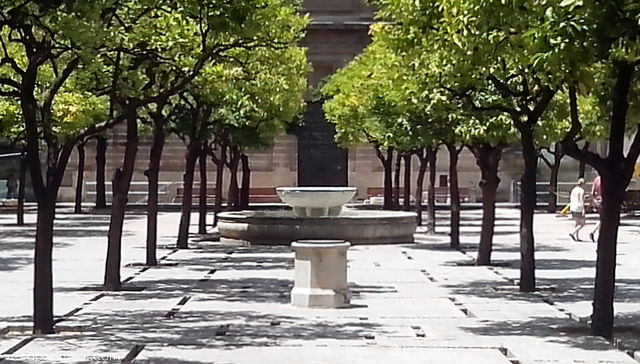
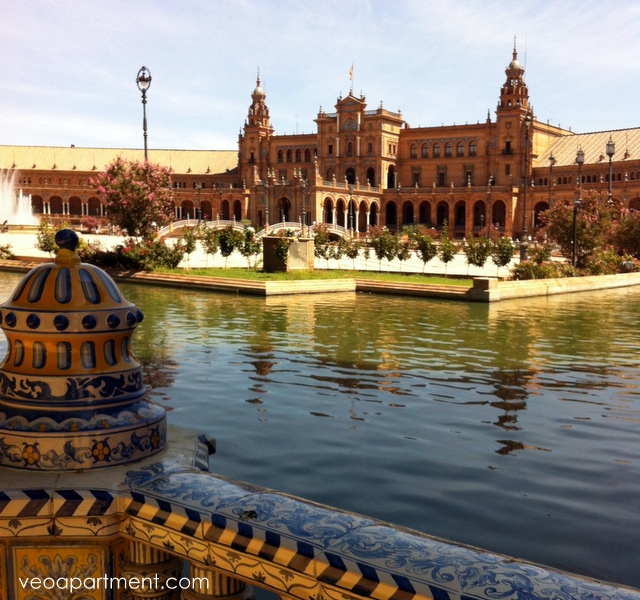
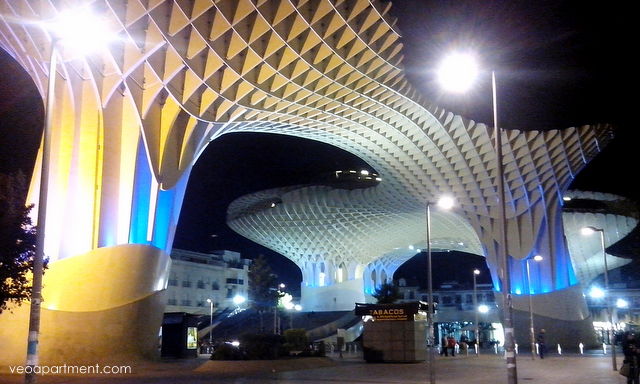
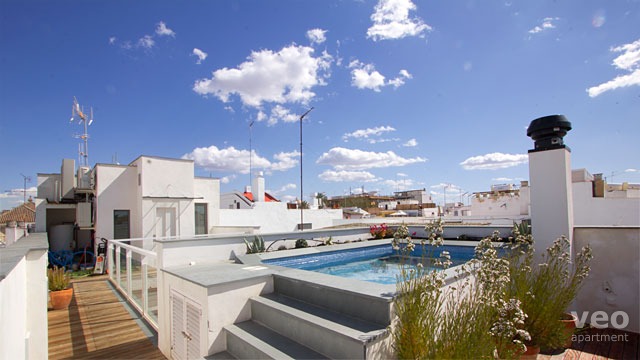
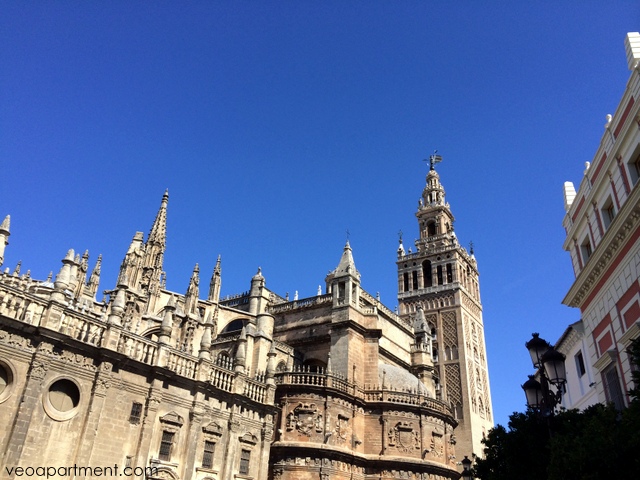 the Cathedral and Giralda tower seen from the Plaza Triunfo
the Cathedral and Giralda tower seen from the Plaza Triunfo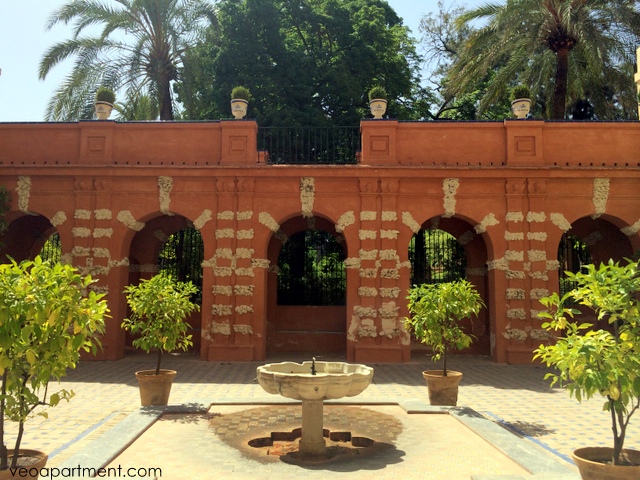 a fountain inside the Alcázar Palace gardens
a fountain inside the Alcázar Palace gardens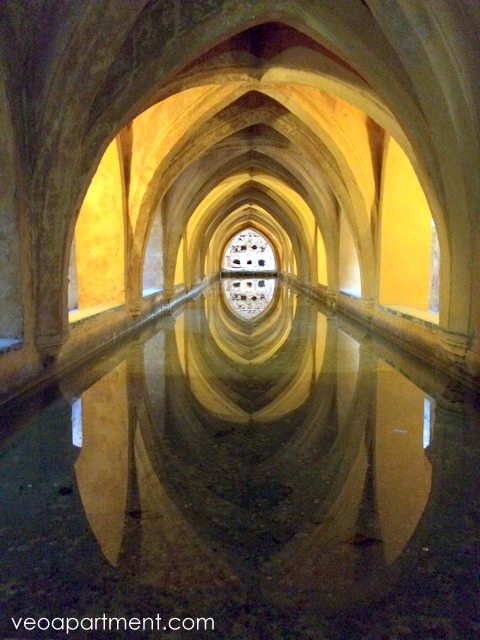 baths of Doña María de Padilla
baths of Doña María de Padilla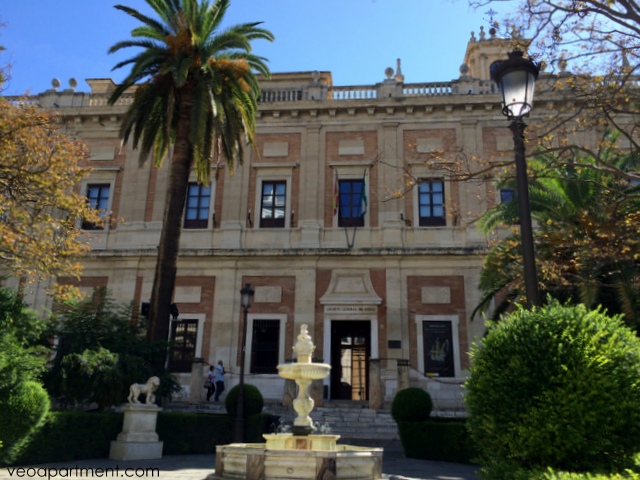 Archivos de India entrance on Avenida de la Constitución
Archivos de India entrance on Avenida de la Constitución